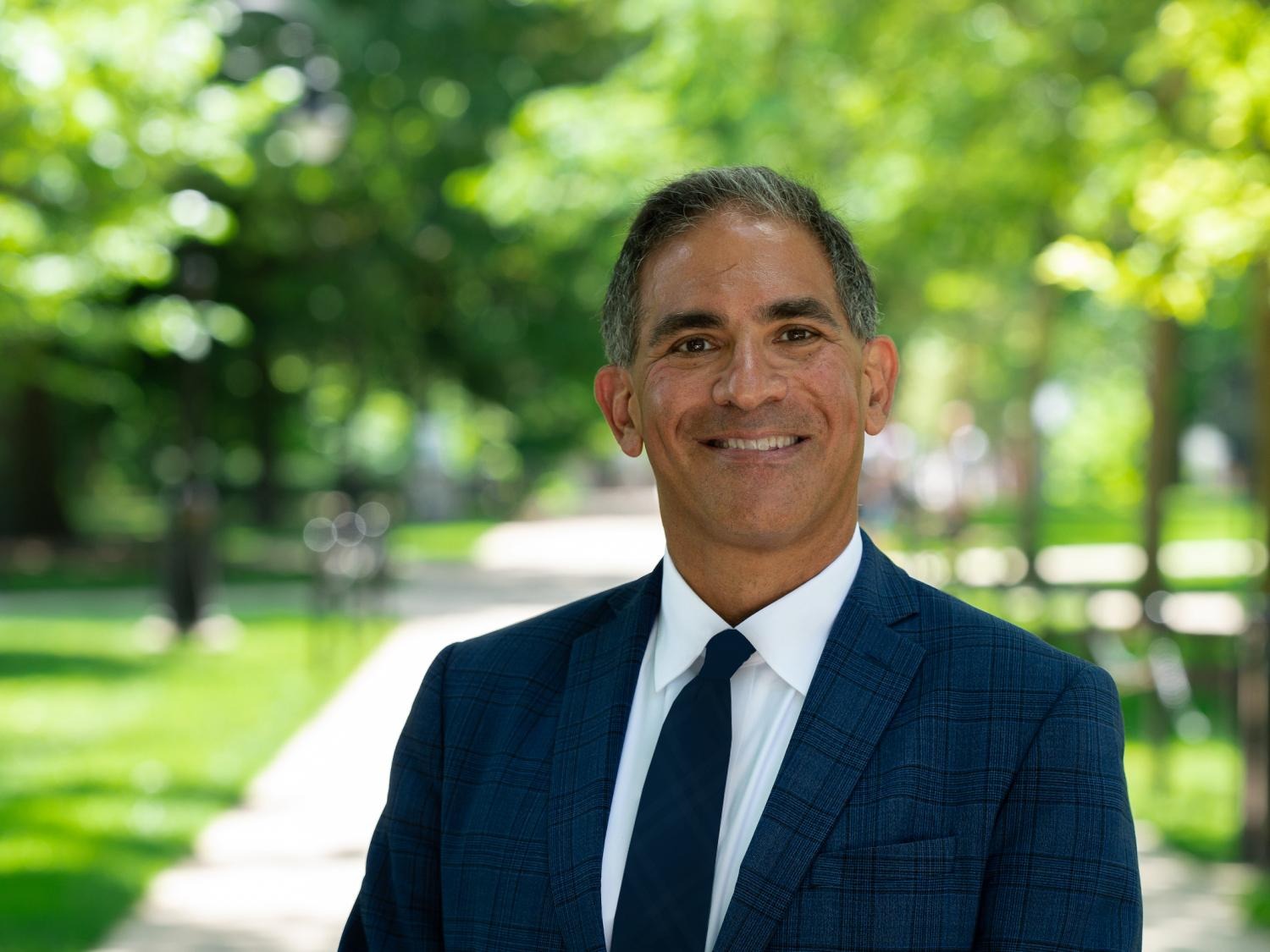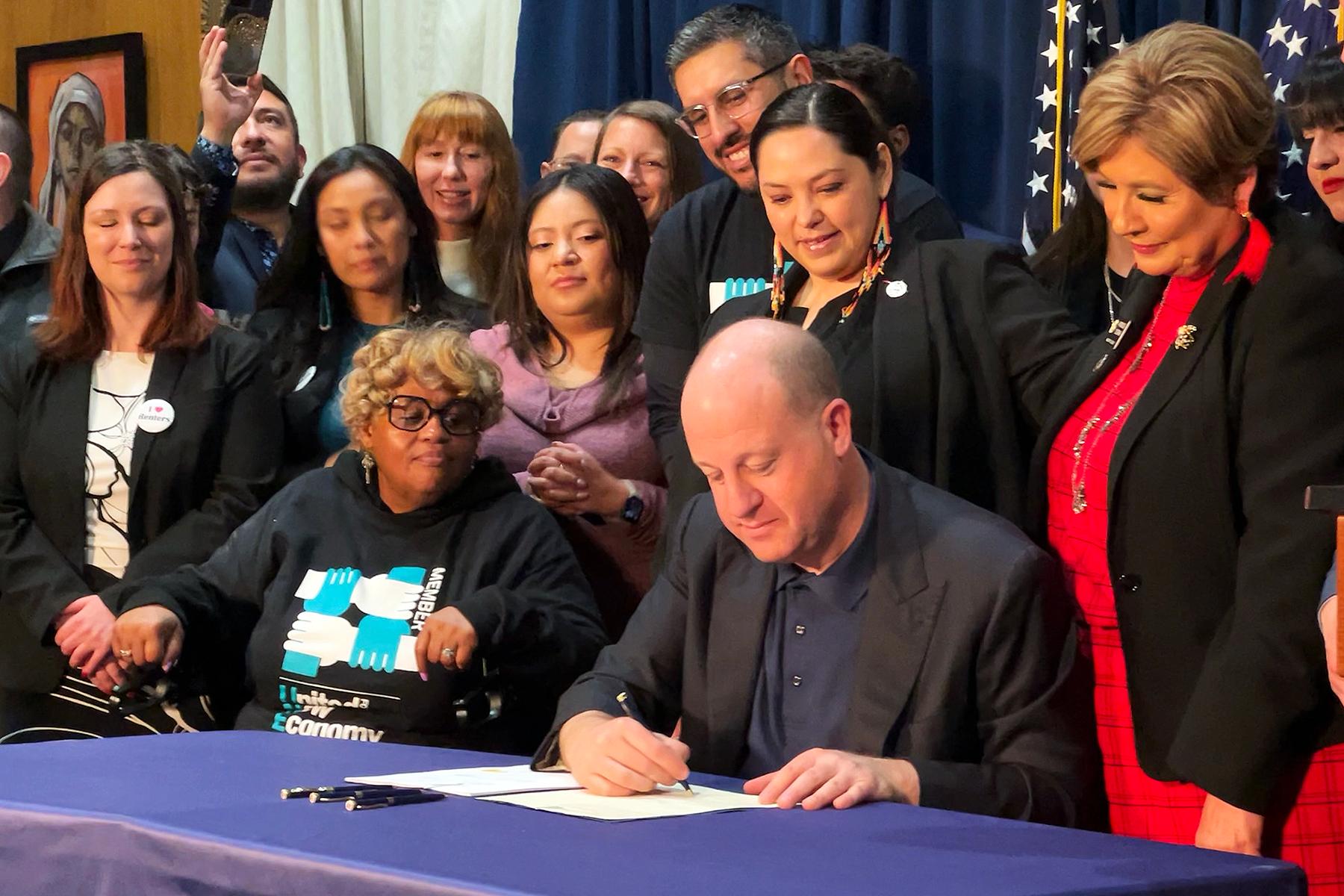
CORRECTION: An earlier version of this story stated that Aspen School District would see its state funding drop. Though its per-pupil funding would decrease, its total state funding would increase by $248,000.

The ideas behind Amendment 66 have been publicly debated for nearly three years, but many Coloradans know nothing about it. CPR asked a dozen people on the streets if they’d heard of it, and few had. It's not surprising, since the bill that led to the measure is about 180 pages long.
A lot of people are focusing on the tax increase, but perhaps more importantly, the amendment would change the way money is distributed to schools. Every district would see a rise in funding. 66’s political director Damion LeeNatali says more state funding would shift to areas with lower property tax bases, like the San Luis Valley.
“They have students in a bus barn,” he said after a recent visit to that area. “They store their school buses there, and they have a plastic sheet separating the buses from the students so the diesel fumes don’t come through. So yeah, some of the money from Jefferson County and Denver and Douglas County will end up in the San Luis Valley, but I think if we are to say it is the state’s role to ensure that not every child’s opportunity should be tied to their zip code, it has to occur.”
Another change is that, under Amendment 66, districts with higher poverty levels would get more money for each student considered to be “at-risk.” State board of education chair Paul Lundeen says that’s not fair.
“A student with identical at-risk characteristics on one side of the boundary in Denver would bring hundreds of dollars more than if she attended a school a couple of blocks away in Jefferson County,” he said.
But Damion LeeNatali says research clearly shows it costs more to educate kids in high-poverty areas. Denver has a much higher poverty rate than Jefferson County.
“So if you think of it at the classroom level, having a classroom with 90% of your students who are at-risk and who come from poverty and come with challenges, is going to be a little harder to educate them than the classroom with 10% of students in poverty,” he said.
If Amendment 66 passes, a family earning Colorado’s median income of $57,000 a year would pay an extra $133 dollars in income tax. That would raise a total of $950 million statewide. There’s a long list of things it would fund.
Over the years, state lawmakers have asked schools to do many things, such as give intensive support to struggling readers and implement rigorous teacher evaluations; but lawmakers provided no extra money. Amendment 66 would give schools about $400 per student to meet those requirements.
There’s also money for new teachers, since class sizes spiked during the recession. Overall, Amendment 66 would boost per-student spending by more than 11% statewide. Opponents of the measure say there is not enough accountability for schools that get the extra money.
“My experience in the private sector tells me, if you just give somebody a blank check without any deliverables associated with that, you’re not going to get the improvements you want to get,” said State Treasurer Walker Stapleton.
He and other opponents want funding to be contingent on districts hitting specific targets, like test scores or graduation rates. But backers of Amendment 66 say it’s anything but a blank check. State Senator Mike Johnston, the proposal’s driving force, says it would give Colorado the most transparent finance system in the country.
“Colorado will actually be the first state in country that requires by law that dollars go directly to the classrooms," he said, "the first state in the country where we’ll know where every single dollars goes every day, where it will be transparent and accountable, and where we’ll know exactly what return we’ll get on that investment."
Backers also say the extra money would be targeted at programs that are proven to help students improve, like full-day Kindergarten and 25,000 new pre-school slots. It would pay to lengthen the school day and the school year in some districts.
Critics say, even setting aside concerns about accountability and distribution of funds, Coloradans simply can’t afford a tax hike right now. State Representative Polly Lawrence calls it a billion dollar boondoggle.
“This is a very fragile economy,” she said. “Burdening families right now is the wrong way to go with an initiative that does not guarantee a better outcome for our students in a global economy.”
Senator Mike Johnston, however, says even with the funding increases in Amendment 66, Colorado would still be well below the national average in spending per student.
“We’re not building a Cadillac here,” he said. “We’re just trying to get Coloradans off a unicycle, which is what we are riding right now.”
Campaigns on both sides of Amendment 66 are in full swing right now. Polls suggest it will be a very close race.








